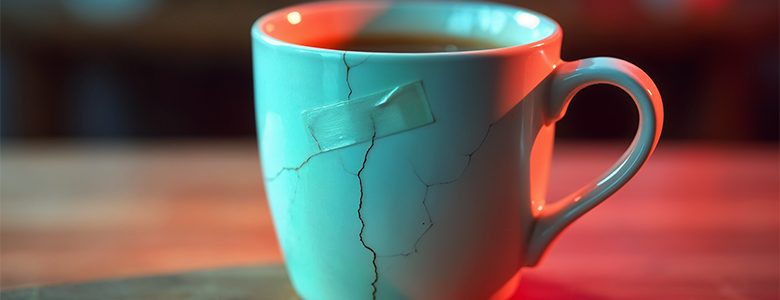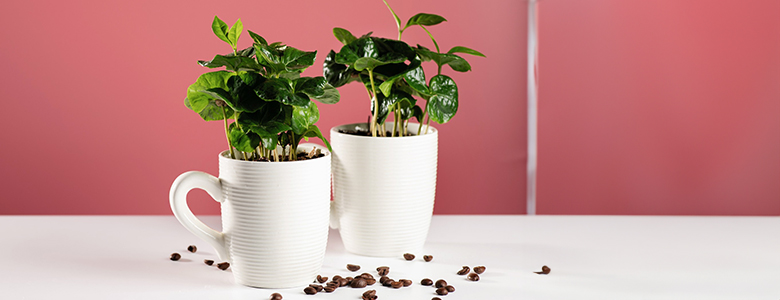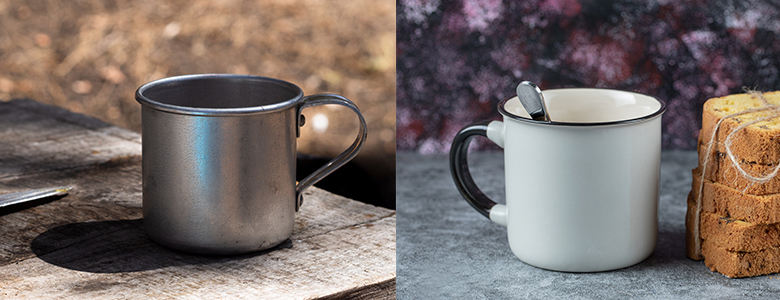1. Preventing Cracks and Chips
Cracks and chips are typically caused by improper handling, extreme temperature changes, or poor storage. Here’s how to prevent these damages:
Tips to Avoid Temperature Shock
Ceramic or glass mugs are vulnerable to thermal shocks. Pouring boiling water into a cold mug or putting a hot mug into icy cold water can cause tiny cracks that can eventually lead to larger cracks.
- Warm your mug with warm water before pouring in boiling water, especially if it's been in a cold environment.
- Don’t place hot mugs directly into the refrigerator or freezer. Let them cool down naturally.
- Avoid putting the mug in microwave or dishwasher, as this exposes it to rapid heating and cooling.
Tips to Handle Your Mugs with Care
Accidental drops can lead to chips and cracks. Don’t stack your mugs too high, as the pressure can damage those at the bottom.
- Store mugs separately or with padding if stacking is necessary.
- Avoid clinking mugs together, especially if you’re washing them in the sink or stacking them in the dishwasher.
Use Quality Mugs
Lower-quality ceramics are more prone to cracks or chips. Investing in high-quality mugs made from materials like stoneware or porcelain can reduce the risk.
2. Preventing Stains
Coffee, tea, and even hot chocolate can leave stubborn stains on mugs, especially on lighter colors. Over time, these stains can become tough to remove. Here’s how to avoid and remove stains effectively:
Tips to Clean Mugs Regularly
One of the simplest ways to prevent stains is by washing mugs immediately after use. Letting coffee or tea sit in the mug for hours allows the tannins to bind to the mug surface, creating stains.
- If immediate washing isn’t possible, rinse the mug to remove any residual liquid.
- For stubborn stains, sprinkle a bit of baking soda on a damp sponge and gently scrub. Baking soda’s mild abrasiveness helps remove stains without scratching.
Steps to Clean Using Natural Cleaning Solution
A mix of white vinegar and baking soda is highly effective in lifting stains from mugs. For more stubborn marks, let the mixture sit for a few minutes before scrubbing.
- Pour some white vinegar into the mug and add a spoonful of baking soda. Let it fizz and sit for a few minutes.
- Scrub the surface gently with a sponge, then rinse thoroughly.
Avoid Using Bleach or Harsh Chemicals
Although strong chemicals remove stains, they can damage the mug’s surface or even leach into it, impacting taste and safety. Stick to natural cleaners that are food safe.
3. Long-Term Care Tips
Keep your mugs in top condition for years, using these general maintenance practices:
- Use a Gentle Cycle: For a printed mug, opt for delicate dishwasher cycle, as harsh cycles can fade designs.
- Inspect Regularly: Check your mugs periodically for hairline cracks. Using a cracked mug can cause further breakage.
- Consider Rotation: Try rotating a single mug with others to reduce wear and tear on a single item. This spreads out usage, keeping each mug in better condition.
Conclusion
By following these tips, you can enjoy your favorite mugs for years to come without unsightly cracks, chips, or stains. Proper care and mindful cleaning habits will keep your mugs safe, functional, and looking new, preserving the moments and memories they hold.









